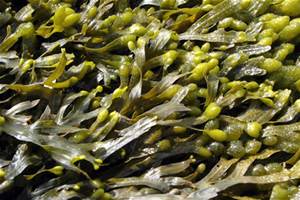The following article considers the impending food security issues and how the impact of factors such as a growing population, soil nutrient depletion and climate change need to be urgently considered and how new and emerging technologies could provide some of the solutions. The topics discussed include: (i) Food Insecurity; (ii) Nutritional Value of food; (iii) Holistic Solutions; (a) Plant-Breeding; (b) New Breeding Technologies; (c) Nobel-Prize winning CRISPR-Cas9; (iv) Regulatory landscape; (v) Ethical concerns; (vi) Commercial opportunity for CRISPR-Cas9

(i) Food Insecurity
The basic fact is that the human population, currently 7.948 billion, will be an estimated 9.7 billion by 2050 according to the UN1, and whilst the population rate is slowing, this still represents 22% more mouths to feed compared to today.
The issue of increased demand for food is compounded by a host of environmental impacts, most of which are of our own making. The impacts of climate change on farming in terms of water management, extreme growing conditions, changes in disease prevalence, and diminishing soil quality continue to throw challenge after challenge at the agricultural sector. This situation has led the Ellen MaCarthur Foundation to warn that there are only 60 more harvests until we run out of food2.

(ii) Nutritional value of food.
McCance and Widdowson’s long-term study into the nutritional content of food in the UK found that “there has been a considerable depletion in minerals and trace elements in foodstuffs during the period 1940–2002”, attributable to both farming and marketing practices3. With the additional supply chain disruption and food insecurity witnessed during the global pandemic, as well as the repercussions of war, it is clear just how fragile the infrastructure, on which the 7.948 billion of us rely on, actually is. Enhanced solutions are required to prevent future food shortages. These need to sustainably address resource-availability, soil-quality, crop nutrient-density, environmental pest management, reduce food waste throughout the entire supply chain, and, ensure consistent and reliable harvests for ever-changing climates.
(iii) Holistic solutions
The non-exhaustive list of potential solutions includes…Improved Integrated Crop Management (ICM) is a holistic approach that aims to deliver sustainable crops through observing and utilising the synergies between crops (inter-cropping), the environment and people, to optimise resource usage and minimise chemicals. This is a highly sustainable solution, although takes time to perfect and can be inconsistent. Innovative methods of farming offer new ways to grow food where the demand exists; urban farms certainly reduce food miles and the carbon footprint, create jobs and connect people with food, but the considerable resource usage and space requirements in vertical farms is not ideal. Coupling urban faming with localised organic waste streams could utilise some of the 33% food waste4 as fertiliser/feed for the food system. Encouraging not only locally grown foods but foods that offer a better nutrient to resource ratio, such as alternative proteins verses meat, will have a positive impact, but soil quality and crop yields will need to be even more robust than they are now.
Plant-Breeding
Plant breeding has transformed farming, selecting the best traits to deliver more consistent and high yield crops. However, the practice of cross-breeding has contributed to the reduced nutritional content of our food and certain nutritional- and disease-resistance crop traits have been lost that are now considered valuable. Whilst this practice has exacerbated some of the agricultural issues currently faced, it should be acknowledged that every generation makes the best decisions that it can, with the information available at the time. The current leaders in agricultural science will hopefully be keeping these lessons in mind as they look to the future.
New Breeding Technologies
Recovering lost desirable crop-traits utilising traditional plant-breeding programs is long and costly. So, enter the New Breeding Technologies (NBTs). ”NBTs provide a range of exciting and highly controllable ways to generate new plant varieties. Some provide new possibilities not previously available.5 NBTs include the established methods of genetic modification already in use, such as Transgenic Plants, which are considered to be genetically modified organisms (GMO). Then there’s RNA interference, or gene silencing, which can be used in the host (plant) to change the function of certain genes and thereby confer disease- or drought-resistance, for example; in this scenario the plant is still considered as GM. When RNAi is applied topically to the plant to affect the response of specific pests to that plant, the plant is not considered GM.
Nobel prize winning CRISPR-Cas9
The latest in the New Breeding Technologies story is CRISPR-Cas9, a precise technology that allows a specific piece of DNA to be cut. In 2020, The Nobel Prize for Chemistry was awarded to Emmanuelle Charpentier and Jennifer A. Doudna for the development CRISPR genome editing: a cheaper, faster, and easier to use gene-editing tool6. These ‘molecular scissors’ utilise enzyme technology to accelerate changes with the plant to develop desirable traits. As CRISPR technology does not introduce any genetic material, the resulting plants are not considered to be genetically modified in many countries.
The potential agricultural applications for CRISPR genome editing are just beginning to be understood, and could be game-changing providing the ability to identify and design superior crop traits to meet the nutritional and quantitative food demands of the future. It is thought to have the potential to address all of the issues discussed in this article, whilst ensuring that, due to its high precision, no off-target effects will occur.
The commercial benefits that CRISPR is starting to present are broad: from plant architecture enabling automated harvesting to specific beneficial nutrition, to improved cropping behaviour. However, research of this nature takes time and resources, and the innovative biotech companies forging the way need active and positive engagement from the wider food and drink industry to realise the potential.

(iv) Regulatory landscape
However, from a regulatory perspective, interpretation and acceptance of genetically modified foods is different across the globe. The US does not regulate gene-edited crops that incorporate small changes similar to those that occur naturally in nature. The EU currently treat all gene-edited crops as genetically modified organisms, however new breeding technologies such as gene editing are under active review 7. The UK, however, has recently simplified gene editing rules make it easier for researchers to undertake the development of more crops with desirable traits such as nutrition, disease and pest resistance8. China’s new rules are somewhere between the two – currently it can take up to six years to obtain biosafety approval for a GM crop in China, but in the new rules, approval may come down to 1-2 years.
(v) Ethical concerns
As with any the adoption of any new technology the social and ethical concerns need to be carefully considered. Increasing yields due to a game-changing technology such as CRISPR could result in lower incomes for growers, for example.
The potential impact of gene-edited crops on the local environment, beneficial insect communities and wildlife should also be considered.
A combination of all of the potential solutions discussed, play a part in the future of agriculture. If the pace of development is not fast enough then GMO may be the only viable solution. CRISPR gene-editing shows significant potential and needs to be evaluated by independent growers, the large companies that influence growers, as well as regulators, as a matter of urgency. Eyes wide open. We have to do something, If we have learnt anything by now, it is that everything is connected, and there are always consequences for our actions.
(vi) Commercial opportunity for CRISPR-Cas9.
Many biotech firms have been established on the basis of the Nobel Prize winning research in order to provide rapid and cost-effective introductions of new and better varieties in agriculture, and treatments and cures for rare genetic diseases in humans.
These innovative technology-led start-ups are developing the pioneering platforms and techniques that will allow agricultural crops to be designed, without genetic modification, that will allow for improved crop-traits. With challenges of this magnitude, and immediate action required, commercialisation of these opportunities will be an essential component of the tool-kits developed to tackle long term food security.
If you are interested in the potential and benefit of CRISPR within your product range, from cucumber to chocolate, contact The Aurora Ceres Partnership Ltd, to be introduced to some of the technologies and technology owners who will play an important part of the future of food.
Refs
- 9.7 billion on Earth by 2050, but growth rate slowing, says new UN population report | United Nations
- Will the world really run out of food (ellenmacarthurfoundation.org)
- Mineral_Depletion_of_Foods_1940_2002.pdf (betterbiohealth.com)
- Food Waste Facts and Statistics – The Eco Experts
- vg16010-new-breeding-technologies.pdf (horticulture.com.au)
- CRISPR genome editing gets 2020 Nobel Prize in Chemistry (acs.org)
- EC study on new genomic techniques, April 2021
- New powers granted to research gene editing in plants. UK Gov. Jan 2022.





